-
Rail line service disruptions caused by sea level rise to increase dramatically
Rail services to and from the South West of England could be disrupted for more than 10 percent of each year by 2040 and almost a third by 2100, a new study suggests. The cost of maintaining tracks and sea defenses could also soar as predicted sea level rises, coupled with coastal storms and floods, pose major challenges for rail operators and governments.
-
-
Growing risks in flood-prone areas due to economic growth more than climate change
Worldwide economic losses from river flooding could increase 20-fold by the end of the twenty-first century if no further actions on flood risk reduction are taken. There are two contributors to risks associated with river flooding. Floods’ frequency and severity (both influenced by climate change); and the exposure to floods of people and economic assets (determined by economic activity and human residency in flood-prone areas). Researchers calculate that in many flood-prone regions of the world, more than 70 percent of the increase in flood-related risks over the coming decades can be attributed to economic growth and residency patterns in flood prone areas.
-
-
Iranian hackers attacked New York dam

In 2013, Iranian government hackers infiltrated the control system of Bowman Avenue Dam in Rye, New York, located twenty-five miles from New York City. Using a cellular modem, the hackers could have released larger volumes of upstream water without warning. As dams go, the Rye dam is small at about 20ft tall. There was some confusion initially, as DHS and DOE thought a similarly named dam in Oregon — the Arthur R. Bowman Dam – was the one hacked. The Oregon dam, at 245 feet, is much bigger, and hacking its control systems could have had much more serious consequences.
-
-
Harnessing distributed energy devices to balance the power grid

The electric grid has to balance power supply and demand nearly in real-time, requiring power plants to be adjusted on a second-by-second basis. This instantaneous balance is made significantly more complex by renewable energy such as wind and solar, which add more uncertainty and variability. A new research project is proposing a unique solution to this growing problem: employing the millions of distributed energy resources that already exist, such as solar panels on rooftops and heating and cooling systems in buildings.
-
-
Making the power grid more resilient, flexible
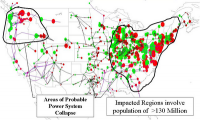
“The biggest and most complex machine ever built by humankind” – this is how one researcher describes the U.S. power grid. A research team has been charged with the formidable task of transforming that big and complex machine from the inside out. Inverters convert DC (direct current) electricity to AC (alternating current) electricity, the kind that forms the basis of today’s power grid. To integrate more inverter-based distributed generation into the grid, the researchers are developing a dynamic distribution system (DDS) that supplements centralized power plants, instead of replacing them.
-
-
Idaho to become U.S. geothermal research hot spot
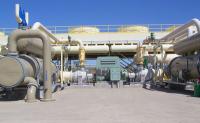
For all the talk about energy shortages, the fact is the Earth is giant ball of energy that has been producing heat ever since the solar system was formed billions of years ago. The temperature at the core — 6,000 degrees Celsius — is roughly the same as the surface of the sun. All that heat radiates outward through the Earth’s mantle and crust. Less than 1 percent of the electricity in the United States comes from geothermal sources, and energy specialists believe that geothermal power should make a much greater contribution to U.S. electricity. A new consortium plans to pump water into the rock about 8,000 to 12,000 feet deep, fracture the rock and capture heat, then bring heated, pressurized water back to the surface to generate energy.
-
-
“Hydricity”: Using solar energy to produce power round-the-clock
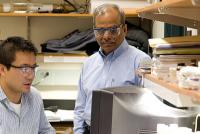
Researchers are proposing a new “hydricity” concept aimed at creating a sustainable economy by not only generating electricity with solar energy, but also producing and storing hydrogen from superheated water for round-the-clock power production.
-
-
Stormwater, graywater offer alternative water sources

In the face of drought and major water shortages, the United States is increasingly turning to alternative water sources like stormwater and graywater, but guidelines and research on their risk to public health and the environment are needed to support decisions for safe use, says a new report. Graywater and stormwater could significantly supplement traditional potable water supplies using existing technology to capture and treat the waters, but there is currently limited information on the costs, benefits, risks, and regulation of such projects.
-
-
Fracking-induced earthquakes increase in magnitude over time
A study by geophysicists shows that earthquakes resulting from fracking-related wastewater injection follow several indicative patterns that are starkly different from natural causes. One of the study’s main conclusions is that the likelihood of large-magnitude manmade, or “induced,” earthquakes in areas where fracking activity takes place, increases over time, independent of the previous seismicity rate. The study’s findings could have implications for both the oil and natural gas industry and for government regulators. Under current practices, extraction activities typically shut down in an area if a high-magnitude earthquake occurs. But according to the researchers, a better approach might be to limit production before a large quake occurs.
-
-
Climate change rapidly warming world’s lakes, threatening freshwater supplies
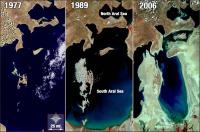
Climate change is rapidly warming lakes around the world, threatening freshwater supplies and ecosystems, according to a study spanning six continents. The study is the largest of its kind and the first to use a combination of satellite temperature data and long-term ground measurements. A total of 235 lakes, representing more than half of the world’s freshwater supply, were monitored for at least twenty-five years. The study found that lakes are warming an average of 0.61 degrees Fahrenheit (0.34 degrees Celsius) each decade. This is greater than the warming rate of either the ocean or the atmosphere, and it can have profound effects, the scientists say.
-
-
U.S. officials barred from reviewing social media postings of visa applicants
Officials from DHS and the Department of State, as a general policy, do not check social media postings of applicants out of civil liberties concerns. With this policy in place, the department’s officials who handled Tashfeen Malik’s application could not have seen her pro-ISIS postings and note her growing radicalization. Officials from United States Citizenship and Immigration Services (USCIS) and U.S. Immigration and Customs Enforcement (ICE) pressed for a change in DHS policy in light of the fact that social media is increasingly used by followers of jihadist groups to declare their allegiance, but the disclosures by Edward Snowden about NSA surveillance programs was behind the reluctance of DHS high officials to change the policy for fears such a change would further damage the administration’s standing with civil rights groups and European allies.
-
-
Protecting the U.S. electrical grid from cyberattack
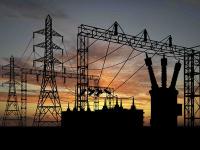
Across the United States, 3,200 separate organizations own and operate electrical infrastructure. The widely dispersed nature of the nation’s electrical grid and associated control systems has a number of advantages, but since the late 1990s, cost pressures have driven the integration of conventional information technologies into these independent industrial control systems, resulting in a grid which is increasingly vulnerable to cyberattack, either through direct connection to the Internet or via direct interfaces to utility IT systems. DARPA is soliciting proposal for creating automated systems to restore power within seven days or less after a cyberattack on the grid.
-
-
Scientists develop new way to find age of drinking water
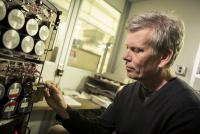
It can take days for water to travel from a filtration plant to your tap and the length of time the journey takes could affect water quality. Disinfectants from water treatment, like chlorine, prevent the growth of harmful microbes, but they can break down over time, creating toxic byproducts in the process. Minimizing the water’s travel time in pipes reduces both processes, but measuring that time is difficult. Scientists have developed a new method of finding the age of water at any point in a distribution system using something that is already naturally in water: residual radioactive atoms from nuclear fallout of the 1950s and early 1960s.
-
-
Nature influences water in the Colorado River basin more than humans do
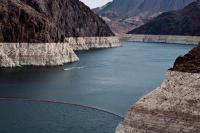
Researchers have found that the water supply of the Colorado River basin, one of the most important sources for water in the southwestern United States, is influenced more by wet-dry periods than by human use, which has been fairly stable during the past few decades. The team found that water storage decreased by 50 to 100 cubic kilometers (enough water to fill Lake Mead as much as three times) during droughts that occur about every decade. The big difference between recent and previous droughts is that there have been few wet years since 2000 to replenish the water. In contrast, multiple wet years followed drought years in the 1980s and 1990s.
-
-
Contacting ETs: Should we announce our location to an alien force?

While politicians quibble over how to deal with illegal immigration, an ominous group of foreigners goes unaddressed: space aliens. Should humans try to contact creatures from other galaxies? Do we really want that force awakened? For scientists, these are not esoteric questions. The fate of the planet may be at stake. Scientists warn that we should think long and hard about whether we should risk announcing our location to potentially real-life equivalents of Klingons or Stormtroopers. As physicist Stephen Hawking warned in 2010, “If aliens visit us, the outcome would be much as when Columbus landed in America, which didn’t turn out well for the Native Americans.”
-
More headlines
The long view
Helping Strengthen America’s Critical Infrastructure
Everyday life depends on a robust infrastructure network that provides access to running water, communications technology and electricity, among other basic necessities. The experts who keep our national infrastructure secure and resilient also need a strong network to share their knowledge and train the next generation of professionals capable of solving complex infrastructure challenges.
AI and the Future of the U.S. Electric Grid
Despite its age, the U.S. electric grid remains one of the great workhorses of modern life. Whether it can maintain that performance over the next few years may determine how well the U.S. competes in an AI-driven world.
Using Liquid Air for Grid-Scale Energy Storage
New research finds liquid air energy storage could be the lowest-cost option for ensuring a continuous power supply on a future grid dominated by carbon-free but intermittent sources of electricity.
Enhanced Geothermal Systems: A Promising Source of Round-the-Clock Energy
With its capacity to provide 24/7 power, many are warming up to the prospect of geothermal energy. Scientists are currently working to advance human-made reservoirs in Earth’s deep subsurface to stimulate the activity that exists within natural geothermal systems.
Experts Discuss Geothermal Potential
Geothermal energy harnesses the heat from within Earth—the term comes from the Greek words geo (earth) and therme (heat). It is an energy source that has the potential to power all our energy needs for billions of years.
